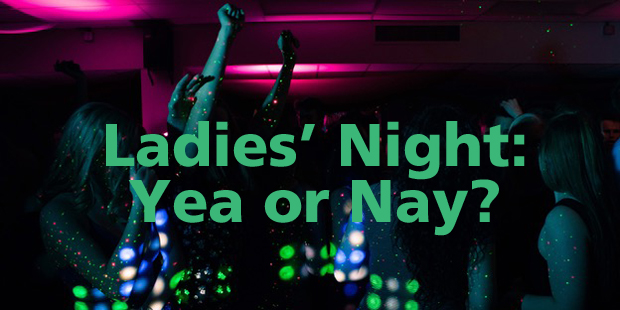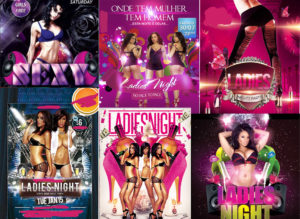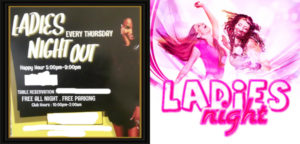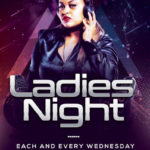Ladies’ Night—it’s still a thing in most U.S. states (including Texas), but you won’t see promotions for discounted drinks or cover from women in California, Maryland, Pennsylvania or Wisconsin. These states have ruled ladies’ night discounts as unlawful gender-based price discrimination. But similar challenges in states like Illinois, Minnesota and Washington yielded different results. So, is the concept harmless marketing, unlawful discrimination, and/or an outdated gender practice?
The Legal Debate
Because bars and clubs (and other private businesses) aren’t considered “state actors” (as in, they’re not legal extensions of the state in either governmental capacity or funding), claims against ladies’ night have failed under both the Equal Protection Clause of the Fourteenth Amendment and under the Civil Rights Act of 1871. Also, things get tricky when considering Title II of the Civil Rights Act of 1964: discrimination based on race, color, religion and national origin—but not sex, gender, or sexual orientation—is outlawed in hotels, motels, restaurants, theaters, and all other public accommodations engaged in interstate commerce—but private clubs are exempt (and still yet, there’s no definition of the term “private”).
So essentially, gender-based price discrimination is left to the states. It becomes an issue whenever there’s proof of intent to discriminate. This was the basis of upholding ladies’ night in Illinois. In The Dock Club, Inc. v. Illinois Liquor Control Commission, the court ruled that the Illinois Dramshop Act’s anti-discrimination provision barred only conduct that prohibited patronage (like saying, “no men allowed”), not encouraged select patronage (i.e., “ladies enter for free”). Minnesota’s take is that ladies’ night is basically out of the hands of the law. And the perspective of the Washington Supreme Court’s majority in the court rulings there were, to paraphrase, “complaints of ladies’ night aren’t such a big deal that we should change the Constitution, and they erode public respect for the seriousness of the Equal Rights Amendment.” Those places view it as not discriminatory, legally valid to require enforcement, or so essential to equal rights as needing to rewrite major parts of the constitution.
Court decisions in California relied on the state’s Unruh Civil Rights Act for guidance, which states, “All persons within the jurisdiction of this state are free and equal, and no matter what their sex […] are entitled to the full and equal accommodations, advantages, facilities, privileges, or services in all business establishments of every kind whatsoever.” Similarly in Montgomery Country of Maryland, the human relations law that influenced the state’s stance on ladies’ night prohibits “any distinction with respect to any person based on race, color, sex, marital status, religious creed, ancestry, national origin, handicap, or sexual orientation in connection with admission to, service or sales in, or price, quality or use of any facility or service of any place of public accommodation, resort or amusement in the county.” And in Pennsylvania, the Commonwealth Court specifically ruled that charging different amounts for cover and/or drinks according to gender is discriminatory.
Interestingly, the Nevada Equal Rights Commission ruled in favor of a man making discrimination claims against a gym offering discounts for women. However, the topic hasn’t been litigated in Nevada courts; surprising, considering Las Vegas cover/event tickets for men are often at least double the price as that for women. The legal practice currently in place is along the lines of, “don’t offer gender-based prices if you can’t afford a discrimination lawsuit,” something high-end clubs and casinos won’t have to worry about any time soon.
The Social Debate
The first question that comes to mind in the debate about ladies’ night is, who is it really for? It’s certainly not a marketing tactic meant to give women discounts because promoters are being nice. It’s to get more women to come out, to attract more men, to buy women more drinks because they’re cheaper, and more drinks means a better chance at hooking up. So in essence, ladies’ night is really about marketing to men. Just take a look at some of these advertisements:
And no, I’m not shaming sexy women or women who want to dress sexy. But this isn’t exactly marketing to women to get them to go out, unless there was something that said, “Judgement-free! Extra security to keep roofie-wielding creeps out! This is all about you feelin’ yourself!” This is marketing to men, by men. Perhaps if it were women marketing to women, the flyers might look more like this:
(MAJOR props to the flyer above, featuring a ladies’ night DJed by an actual woman.)
Here’s what I’m saying. If it’s already in the legal realm of gender-based price discrimination, and if the customers aren’t actually women, ladies’ night needs to go. Women, if we’re pissed off about the “pink tax,” then we have to say no to all gender-based price discrimination, even if it’s supposedly in our favor. We also have to realize that historically, ladies’ night was never about us. It was about getting dudes to come out and spend more money in the hopes of getting laid.
I propose a new idea. A real “ladies’ night,” where it’s for us, by us. Equal pricing on everything, but events thrown by women, supporting women-owned venues, promoted by women, with women DJs, production, and entertainment—wherever and however we can. Where women don’t feel pressured to talk to some dude because he keeps forcing a cheap drink in her hand. Where women can dance freely without bro vultures on the hunt, have a great time, feel safe, and connect with each other in a non-competitive environment. Are men welcome? Of course!! The only extra currency anyone has to pay is respect for each other.
Ash Cash Dillon is a legit word nerd with a killer bass face and a love of all that is stone cold groovy. You can find her writing all over the interwebs, business world, and take-out menus via sharpie vandalism.








